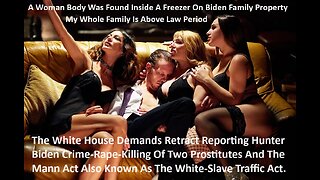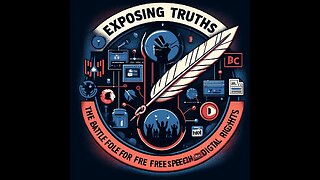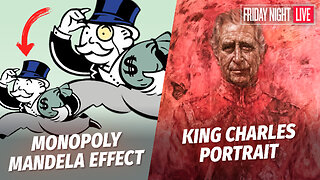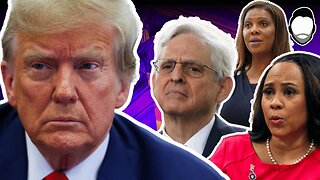Black Kings and Queens the Rulers of England From 1603/1901 Historians Never Talk?
So Moorish and Black Kings and Queens the Rulers of England and Europe From 1603/1901 You may have heard of these England and European Emperors, Kings and Queens, but did you know that they were Black ? So England /American after 1776? So Slavery Trade began 400 years ago this month. Started by Black King James I and VI of Scotland 1603 -1625 signed into law by this king ? This is referred to as the country’s original sin, but it is more than that It is the country’s true origin. Ancient Europe is not what we've been taught. Many things have been whitewashed, especially its ancient History. Here are some facts that you probably didn't know. President Abraham Lincoln, the Melungeon or Tawny Moor was the President of the United States. As President, he has to balance the Moorish side and the European side.
Monarchs of England, Wales and Ireland
ELIZABETH I 1558-1603
The daughter of Henry VIII and Anne Boleyn, Elizabeth was a remarkable woman, noted for her learning and wisdom. From first to last she was popular with the people and had a genius for the selection of capable advisors. Drake, Raleigh, Hawkins, the Cecils, Essex and many many more made England respected and feared. The Spanish Armada was decisively defeated in 1588 and Raleigh’s first Virginian colony was founded. The execution of Mary Queen of Scots marred what was a glorious time in English history. Shakespeare was also at the height of his popularity. Elizabeth never married.
British Monarchs
THE STUARTS
JAMES I and VI of Scotland 1603 -1625
James was the son of Mary Queen of Scots and Lord Darnley. He was the first king to rule over Scotland and England. James was more of a scholar than a man of action. In 1605 the Gunpowder Plot was hatched: Guy Fawkes and his Catholic friends tried to blow up the Houses of Parliament, but were captured before they could do so. James’s reign saw the publication of the Authorised Version of the Bible, though this caused problems with the Puritans and their attitude towards the established church. In 1620 the Pilgrim Fathers sailed for America in their ship The Mayflower.
CHARLES 1 1625 – 1649 English Civil War
The son of James I and Anne of Denmark, Charles believed that he ruled by Divine Right. He encountered difficulties with Parliament from the beginning, and this led to the outbreak of the English Civil War in 1642. The war lasted four years and following the defeat of Charles’s Royalist forces by the New Model Army, led by Oliver Cromwell, Charles was captured and imprisoned. The House of Commons tried Charles for treason against England and when found guilty he was condemned to death. His death warrant states that he was beheaded on 30th January 1649. Following this the British monarchy was abolished and a republic called the Commonwealth of England was declared.
THE COMMONWEALTH
declared May 19th 1649
OLIVER CROMWELL, Lord Protector 1653 – 1658
Cromwell was born at Huntingdon, Cambridgeshire in 1599, the son of a small landowner. He entered Parliament in 1629 and became active in events leading to the Civil War. A leading Puritan figure, he raised cavalry forces and organised the New Model Army, which he led to victory over the Royalists at the Battle of Naseby in 1645. Failing to gain agreement on constitutional change in government with Charles I, Cromwell was a member of a ‘Special Commission’ that tried and condemned the king to death in 1649. Cromwell declared Britain a republic ‘The Commonwealth’ and he went on to become its Lord Protector.
Cromwell went on to crush the Irish clans and the Scots loyal to Charles II between 1649 and 1651. In 1653 he finally expelled the corrupt English parliament and with the agreement of army leaders became Lord Protector (King in all but name)
RICHARD CROMWELL, Lord Protector 1658 – 1659
Richard was the third son of Oliver Cromwell, he was appointed the second ruling Lord Protector of England, Scotland and Ireland, serving for just nine months. Unlike his father, Richard lacked military experience and as such failed to gain respect or support from his New Model Army. Richard was eventually ‘persuaded’ to resign from his position as Lord Protector and exiled himself to France until 1680, when he returned to England.
THE RESTORATION
CHARLES II 1660 – 1685
Son of Charles I, also known as the Merry Monarch. After the collapse of the Protectorate following the death of Oliver Cromwell and the flight of Richard Cromwell to France, the Army and Parliament asked Charles to take the throne. Although very popular he was a weak king and his foreign policy was inept. He had 13 known mistresses, one of whom was Nell Gwyn. He fathered numerous illegitimate children but no heir to the throne. The Great Plague in 1665 and the Great Fire of London in 1666 took place during his reign. Many new buildings were built at this time. St. Paul’s Cathedral was built by Sir Christopher Wren and also many churches still to be seen today.
JAMES II and VII of Scotland 1685 – 1688
The second surviving son of Charles I and younger brother of Charles II. James had been exiled following the Civil War and served in both the French and Spanish Army. Although James converted to Catholicism in 1670, his two daughters were raised as Protestants. James became very unpopular because of his persecution of the Protestant clergy and was generally hated by the people. Following the Monmouth uprising (Monmouth was an illegitimate son of Charles II and a Protestant) and the Bloody Assizes of Judge Jeffries, Parliament asked the Dutch prince, William of Orange to take the throne.
William was married to Mary, James II’s Protestant daughter. William landed in England and James fled to France where he died in exile in 1701.
WILLIAM III 1689 – 1702 and MARY II 1689 – 1694
On the 5 November 1688, William of Orange sailed his fleet of over 450 ships, unopposed by the Royal Navy, into Torbay harbour and landed his troops in Devon. Gathering local support, he marched his army, now 20,000 strong, on to London in The Glorious Revolution. Many of James II’s army had defected to support William, as well as James’s other daughter Anne. William and Mary were to reign jointly, and William was to have the Crown for life after Mary died in 1694. James plotted to regain the throne and in 1689 landed in Ireland. William defeated James at the Battle of the Boyne and James fled again to France, as guest of Louis XIV.
ANNE 1702 – 1714
Anne was the second daughter of James II. She had 17 pregnancies but only one child survived – William, who died of smallpox aged just 11. A staunch, high church Protestant, Anne was 37 years old when she succeeded to the throne. Anne was a close friend of Sarah Churchill, the Duchess of Marlborough. Sarah’s husband the Duke of Marlborough commanded the English Army in the War of Spanish Succession, winning a series of major battles with the French and gaining the country an influence never before attained in Europe. It was during Anne’s reign that the United Kingdom of Great Britain was created by the Union of England and Scotland.
After Anne’s death the succession went to the nearest Protestant relative of the Stuart line. This was Sophia, daughter of Elizabeth of Bohemia, James I ‘s only daughter, but she died a few weeks before Anne and so the throne passed to her son George.
THE HANOVERIANS
GEORGE I 1714 -1727
Son of Sophia and the Elector of Hanover, great-grandson of James I. The 54 year old George arrived in England able to speak only a few words of English with his 18 cooks and 2 mistresses in tow. George never learned English, so the conduct of national policy was left to the government of the time with Sir Robert Walpole becoming Britain’s first Prime Minister. In 1715 the Jacobites (followers of James Stuart, son of James II) attempted to supplant George, but the attempt failed. George spent little time in England – he preferred his beloved Hanover, although he was implicated in the South Sea Bubble financial scandal of 1720.
GEORGE II 1727 – 1760
Only son of George I. He was more English than his father, but still relied on Sir Robert Walpole to run the country. George was the last English king to lead his army into battle at Dettingen in 1743. In 1745 the Jacobites tried once again to restore a Stuart to the throne. Prince Charles Edward Stuart, ‘Bonnie Prince Charlie’. landed in Scotland. He was routed at Culloden Moor by the army under the Duke of Cumberland, known as ‘Butcher’ Cumberland. Bonnie Prince Charlie escaped to France with the help of Flora MacDonald, and finally died a drunkard’s death in Rome.
GEORGE III1760 – 1820
He was a grandson of George II and the first English-born and English-speaking monarch since Queen Anne. His reign was one of elegance and the age of some of the greatest names in English literature – Jane Austen, Byron, Shelley, Keats and Wordsworth. It was also the time of great statesmen like Pitt and Fox and great military men like Wellington and Nelson. in 1773 the ‘Boston Tea Party’ was the first sign of the troubles that were to come in America. The American Colonies proclaimed their independence on July 4th 1776. George was well meaning but suffered from a mental illness due to intermittent porphyria and eventually became blind and insane. His son ruled as Prince Regent after 1811 until George’s death.
GEORGE IV 1820 – 1830
Known as the ‘First Gentleman of Europe’. He had a love of art and architecture but his private life was a mess, to put it mildly! He married twice, once in 1785 to Mrs. Fitzherbert, secretly as she was a Catholic, and then in 1795 to Caroline of Brunswick. Mrs. Fitzherbert remained the love of his life. Caroline and George had one daughter, Charlotte in 1796 but she died in 1817. George was considered a great wit, but was also a buffoon and his death was hailed with relief!
WILLIAM IV 1830 – 1837
Known as the ‘Sailor King’ (for 10 years the young Prince William, brother of George IV, served in the Royal Navy), he was the third son of George III. Before his accession he lived with a Mrs. Jordan, an actress, by whom he had ten children. When Princess Charlotte died, he had to marry in order to secure the succession. He married Adelaide of Saxe-Coburg in 1818. He had two daughters but they did not live. He hated pomp and wanted to dispense with the Coronation. The people loved him because of his lack of pretension. During his reign Britain abolished slavery in the colonies in 1833. The Reform Act was passed in 1832, this extended the franchise to the middle-classes on a basis of property qualifications.
VICTORIA 1837 – 1901
Victoria was the only child of Princess Victoria of Saxe-Coburg and Edward Duke of Kent, fourth son of George III. The throne Victoria inherited was weak and unpopular. Her Hanoverian uncles had been treated with irreverence. In 1840 she married her cousin Albert of Saxe-Coburg. Albert exerted tremendous influence over the Queen and until his death was virtual ruler of the country. He was a pillar of respectability and left two legacies to the UK, the Christmas Tree and the Great Exhibition of 1851. With the money from the Exhibition several institutions were developed, the Victoria and Albert Museum, the Science Museum, Imperial College and the Royal Albert Hall. The Queen withdrew from public life after the death of Albert in 1861 until her Golden Jubilee in 1887. Her reign saw the British Empire double in size and in 1876 the Queen became Empress of India, the ‘Jewel in the Crown’. When Victoria died in 1901, the British Empire and British world power had reached their highest point. She had nine children, 40 grand-children and 37 great-grandchildren, scattered all over Europe.
-
 14:07
14:07
What If Everything You Were Taught Was A Lie?
17 days agoWhite House Demands Retract Reporting Hunter Biden Crime-Rape Allegations
10.8K5 -
 LIVE
LIVE
Right Side Broadcasting Network
3 days agoLIVE REPLAY: President Trump Keynotes Minnesota GOP Annual Dinner - 5/17/24
11,273 watching -
 1:03:27
1:03:27
Talk Nerdy 2 Us
1 hour agoExposing Truths: Julian Assange's Battle and the TikTok Conspiracy
2.24K -
 1:58:50
1:58:50
Laura Loomer
3 hours agoEP47: Georgia GOP Rocked With Anti-Trump Scandal Ahead of State RNC Convention
19.8K36 -
 2:20:49
2:20:49
Roseanne Barr
4 hours agoWe finally got Ryan Long!!!! | The Roseanne Barr Podcast #48
47.8K66 -
 1:01:06
1:01:06
The StoneZONE with Roger Stone
6 hours agoWill Terrorists Take Down America's Power Grid? With Glenn Rhoades | The StoneZONE w/ Roger Stone
20.4K21 -
 1:03:58
1:03:58
Edge of Wonder
6 hours agoAce Ventura: Mandela Detective, King Charles Portrait & Weird News
23.8K39 -
 1:40:05
1:40:05
The Quartering
10 hours agoWhy Modern Women Suck w/Hoe_Math
47.1K28 -
 1:43:26
1:43:26
Robert Gouveia
6 hours agoGarland SHAKING over CONTEMPT; Congressional MELTDOWN; Fani RAGES at Senate; Tish INVESTIGATED
41.3K60 -
 1:48:05
1:48:05
2 MIKES LIVE
8 hours ago#67 2ML Open Mike Friday, we have a LOT to talk about!
25.3K3